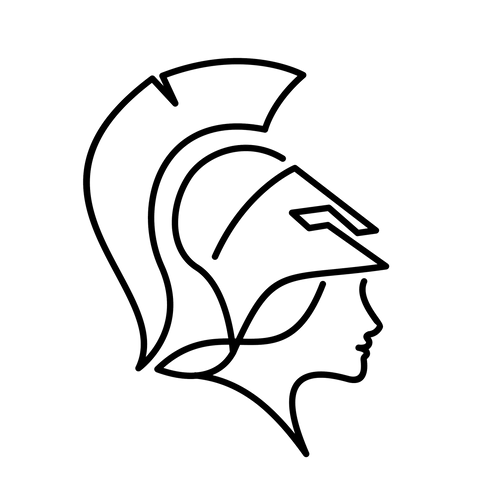The Natural World
Octopus
Related to the dragon, spider and spiral symbolism; it is suggested as a thunder symbol, or as depicting lunar phases; it is associated with the zodiacal sign of Cancer, the depth of the waters and the Summer Solstice, the malefic Janua inferni. In Celtic and Scandinavian art the arms of the octopus are straight, but in Minoan and Mycenaean representations the arms are coiled and take on the symbolism of the spiral.
Intaglio carved on bloodstone agate.
Dandelion
This humble, joyful herald of spring, deeply rooted, a symbol of hope and resilience.
Surface engraved on gold.
Medieval Snail
"Slow is smooth; smooth is fast."
As appearing and disappearing, the snail is lunar; its shell, from its form, is a natural symbol of the labirynth, the spiral and the underground cavern. The sea-snail represents the androgyne as the dual principles of fire and water combined. The snail also signifies slowness and voluptuousness.
Intaglio carved on gold.
Bat & Moon
African: Ambivalent as perspicacity, but also darkness and obscurity. Alchemic: As a double nature of bird and mouse, it can represent the androgyne. Native American: A rain-bringer. Buddhism: Darkened understanding. Chinese: A yin animal as nocturnal, but as a homophone of happiness, fu, it becomeshappiness and good luck, wealth, longevity, peace. Christian: 'The bird of the Devil', an incarnation of the Prince of Darkness. Satan is depicted with bat's wings. European: Associated with black magic and witchcraft; wisdom, cunning, revenge. Japanese: Unhappy restlessnes; a chaotic state.
Surface engraved on gold.
Pineapple Fruit
The pineapple has been a symbol of wealth and hospitality since the early 18th century, when European aristocrats became obsessed with this most 'exotic' of fruit. Although it was first described in English as early as 1568, the ability to cultivate them in temperate climates (basically heated greenhouses) wasn't developed until around 1700. And even when it was possible, the equipment and heating costs made them fantastically expensive to grow (albeit slightly less expensive than direct import). So if you, an 18th century dinner guest, were served up a slice of pineapple, it meant that you were clearly something of a big deal. More-often-than-not the fruits were used as table decoration, and used again and again until they ultimately began to rot.
Intaglio carved on chalcedony.
Ancient
Athena
Athena was goddess of Wisdom and War.
A warrior goddess and protector of cities, she was closely associated with Nike, goddess of victory, although unlike Ares, also a war god, she had no interest in violence for its own sake (the wisdom part on full display here). She represented the 'civilised' and 'intellectual' side of war - the virtues of justice and skill - whereas Ares, the least respected of the twelve Olympian gods, represented blood lust and brute force.
She became the goddess of good council, to kings and warrior-heroes alike, encouraging prudent restraint and practical insight.
She was the also the patron of artisans, craftsmen, and the household handicrafts such as spinning and weaving.
Athena's main temple was the Parthenon in Athens, the great city to which she lent her name. She was usually depicted in full armour, Corinthian helmet pushed back to show her stern and beautiful face, spear in hand, and the aegis, the goat hide shield loaned to her by Zeus, by her side. Her birth was, to say the least, remarkable. On hearing a prophecy that his own children would some day become greater than he himself, Zeus took a leaf out of his own father, Cronus's, book, and swallowed the pregnant Titaness Metis (Athena's mother) whole. Shortly thereafter, Zeus began to suffer a series of blinding headaches, becoming so bad that he ordered Hephaestus to split his forehead open with an axe.
And out sprang Athena, fully grown and armed.
Intaglio carved on carnelian agate
.
Athena's Owl
The owl of Minerva takes its flight only when the shades of night are gathering. - Hegel
Eye of Horus
aka. the Utchat, the "All-seeing", is suggested as the Pole Star and illumination; the eye of the mind. The eye and eyebrow of Horus depict strength and power. The right eye is the sun and Ra and Osiris, the left eye the moon and Isis. The eye of Horus could be associated with the moon and its phases, and could also symbolise offerings made to the gods in the temples.
Intaglio carved on onyx.
Medusa
Near them their sisters three, the Gorgons, winged
With snakes for hair—hatred of mortal man
- 'Prometheus Bound', Aeschylus
The myth of Medusa is one of the most well known of the ancient lores, she shines as a beacon through the annals of time, and a powerful symbol akin to the modern evil eye. A dangerous threat to ward off even more dangerous threats. Once a beautiful priestess of Athena, she caught the eye of Poseidon, god of the sea, who sought to seduce her but when she rejected him he raped and impregnated her in the temple of Athena. Enraged by this act of sacrilege, Athena turned Medusa into a monster with snakes for hair and gaze that turned men to stone.
Most (male) tellings of this story describe Athena as punishing Medusa for being victim of rape but I prefer a different reading, as explored by Glenys Livingstone and Trista Hendren in ‘Re-visioning Medusa’. Perhaps it wasn’t a punishment. Perhaps Athena was taking all the trauma, all the fear, all the anger and rage, and transforming it into fierce protective energy. Medusa becomes the embodiment of female rage in the face of patriarchy and male violence. She serves as a reminder for women not to deny our righteous rage, it can be powerful, protective, even life-saving in a society that expects our meekness.
After Medusa was slain by Perseus and her head delivered to Athena, she made from it her aegis (shield or armour, depending on which source you read): "a fearsome thing with a surface of gold like scaly snake-skin, and the linked serpents and the Gorgon herself upon the goddess’s breast—a severed head rolling its eyes" - Virgil’s Aeneid (Day-Lewie's translation). Indeed, even now, the phrase "under someone's aegis" means under the protection of a powerful or benevolent source.
Intaglio carved on bloodstone agate.
Pegasus
The offspring of Poseidon and the Gorgon Medusa, Pegasus was born of the blood spilled when Medusa was slain by Perseus. A winged stallion, a vision of grace and beauty, Pegasus was an emblem of bravery to the ancient Greeks and a symbol of creative inspiration in the 19th century.
Surface engraved on gold.
Winged Victory
Victoria: Winged Victory. The Roman personification of victory, in peace and in war, rides her four-horse chariot (quadriga) holding a whip. First appearing during the first Punic War, she ultimately came to symbolise Rome's eventual hegemony and right to rule.
Intaglio carved on carnelian agate.
Winged Scarab
The Sun; the path of the sun; self-creative power; Khepera, god of creation; resurrection; immortality; divine wisdom; ruling providence directing and regulating the productive powers of nature. Thought to be all males, the scarab also represented the virility and the generative power of life.
Intaglio carved on lapis lazuli.
Cock & Calanthus
Early 19th century neoclassical jasper intaglio depicting a cockerel (or chicken) facing left next to a calanthus (basket) containing branches of grain. The stone was carved in the Georgian period, circa 1800, and the artist was apparently quite familiar with both the anatomy of the creature, and the Roman symbolism of the cockerel/chicken and grain. It's unusual in that the subject is not a specific deity or hero, as these neoclassical pieces so often depicted, but that of a far more obscure (and potentially less romantic) theme.
The symbology is of abundance and prosperity, the cockerel being often associated with Mercury.
Intaglio carved on jasper.
Fortuna
The Roman personification of Chance, identified with the Greek Tyche. She was portrayed with the cornucopia and with a rudder, to symbolise that she steered the course of people's lives. She was sometimes shown seated, sometimes standing, and sometimes blind. Here, storming through the sky on her winged Wheel of Fortune, her dress billowing behind her in the wind, arms outstretched with a bundle of serpents clutched in one hand and an upturned cornucopia spilling out gold coins in the other.
Fortuna was invoked under many different names, such as Redux (when safe return from a voyage was being sought), Publica and Huiusce Diei (the special Fortuna of that particular day). During the Imperial period, each Emperor had his own personal Fortuna. Under the influence of Greece, Fortuna gradually became assimilated with other divinities, notably Isis and Nemesis.
Intaglio carved on bloodstone agate.
Folklore
Sun Stag
The stag, with its great, branching antlers encircling the sun, is a symbol that dates back to our earliest human history, a symbol of life, renewal, and spiritual transcendence. To our ancient ancestors deer would have been central to survival and as such their imagery is deeply ingrained in our psyche, imagination and mythology. Some of our earliest deities were antlered creatures, they have been worshiped for millenia by people from every corner of the earth from Europe and Asia to America.
The Stag, instantly recognisable with his huge majestic antlers, he represents nobility, honour, sexuality and protection of the herd; he is devoted to the care and creation of his offspring. Female deer do not grow antlers and yet we find the image of the ‘antlered doe’ peppered through the mythology of Europe and Asia, so maybe we are looking at a doe and not a stag? The Doe is all gracefulness, gentleness and sensitivity. She has a highly attuned senses and is aware and alert to her environment, she is, therefore, symbol for our intuition and the ability to see clearly through illusions or chaotic situations.
In mythology from the Eurasian Steppe the cosmos and mother of the sun is a large antlered Celestial Doe often shown carrying the sun in her horns. In Hungarian folklore it is her son, the stag, who bears the sun with the doe representing the cosmos and heavenly firmament. The stag steals the sun between his antlers and each winter solstice the Hunter must chase down this mighty beast to bring back the light. In the Hungarian origin myth it is a miraculous hind (doe) with golden antlers and the sun on its breast who leads two hunters to the bountiful land that becomes Hungary.
Huge migrations of hundreds of reindeer for hundreds of miles happen each year on the Finnmarksvidda plateau, a phenomenon that is over 10,000 years old and it's these epic journeys that associate reindeer with spiritual transcendence. The migration is usually led by a mature doe, the only female deer who IS antlered. Male reindeer actually lose their antlers over winter and they don't begin to grow back until February, so if you see an antlered reindeer at Christmas time (ehem, Rudolph) you’re actually looking at a female. Siberian mythology tells of the Deer Mother Goddess who flies across the sky, bringing back the sun on the Winter Solstice and is perhaps the origin of the Santa Claus story.
Stag or mythical doe these majestic animals with antlers like rays of sunlight, evoke the wild mysteries of the forest, the natural cycles of death and rebirth, and, through their great migrations, transcendence. When coupled with the life bringing sun, the symbolism is powerful indeed.
Intaglio carved on carnelian agate.
The Red Ghost
Intaglio carved on carnelian agate.

